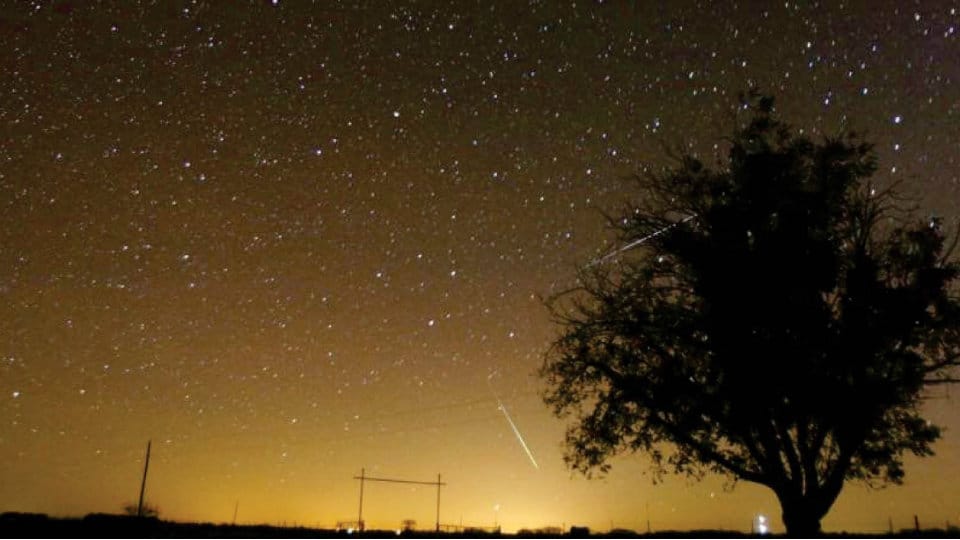By Dr. S A Mohan Krishna, Observational Astronomer
A ‘shooting star’ or ‘meteor’ is caused by a tiny particle of dust entering Earth’s atmosphere. As it plunges downward, it experiences collision with air molecules, and the friction generated causes the particle to glow and eventually burn up completely. Most meteors burn up at altitudes of around 100 Km. It is an exceptional celestial manifestation for sky observers that the extravagant yearly ‘Geminid’ showers will illuminate the night sky on Dec. 13 and 14.
Indians are really fortunate to witness the dazzling Geminid meteor showers under the light of bright waning gibbous moon.
Dry, clear air will help a lot with the lunar glare, but it will be difficult to achieve maximum rates of 50 Geminids/hour even at the best sites. During those hours, we may be able to put it behind and out of your field of view. Geminids are medium-speed meteors.
The Geminids are worth watching for one or two mornings before the peak; there will be slightly less moonlight interference, and some locations will get a short moonless period before morning twilight.
The Geminids should produce a fine display of 1-2 meteor every minute for North American observers with dark skies, weather permitting. Brief bursts of activity could produce even higher rates. The nights and mornings surrounding the peak activity should prove rewarding, too. In other parts of the world, such as Europe, Asia and Australia, the Geminid peak will come during local daylight hours. Still, observers in these parts of the world should still see a very good meteor display on the night of Dec. 13-14, with rates of about one meteor per minute likely. This time in India Geminids are clearly visible in the night sky during 2 am to 4 am.
The Geminid display is for those willing to brave the chill of a December night for a fine winter shower. Geminid meteors are several times denser than the cometary dust flakes that supply most meteor showers, so they burn up less quickly. But for the visibility of Geminid Meteor Shower, there is absolutely no difficulty at all. The night sky is completely free from moon and eventually may be possible to witness these meteor streaks. Peak activity is projected to fortuitously occur at or near 4 am on Dec. 14. Under normal conditions on the night of maximum activity, with ideal dark-sky conditions, at least 60 to 120 Geminid meteors can be expected to burst across the sky every hour on the average.
The Geminid meteor shower is no exception, so the first step is to either stay up late or get up very early to observe the sky between midnight and dawn. The Geminid shower peaks on the early morning of Dec. 14, so that is the best night to go out to observe them.
To see maximum number of meteors, go to a dark sky as far away from lights as reasonably possible. Use a red flashlight for light to preserve your night vision. Red fingernail polish works for making an astronomical flashlight. Look up in the sky in the direction of the constellation Gemini. Stargazers who don’t know the constellation Gemini can look in the eastern half of the sky. No telescope or other optical device is needed.








Recent Comments